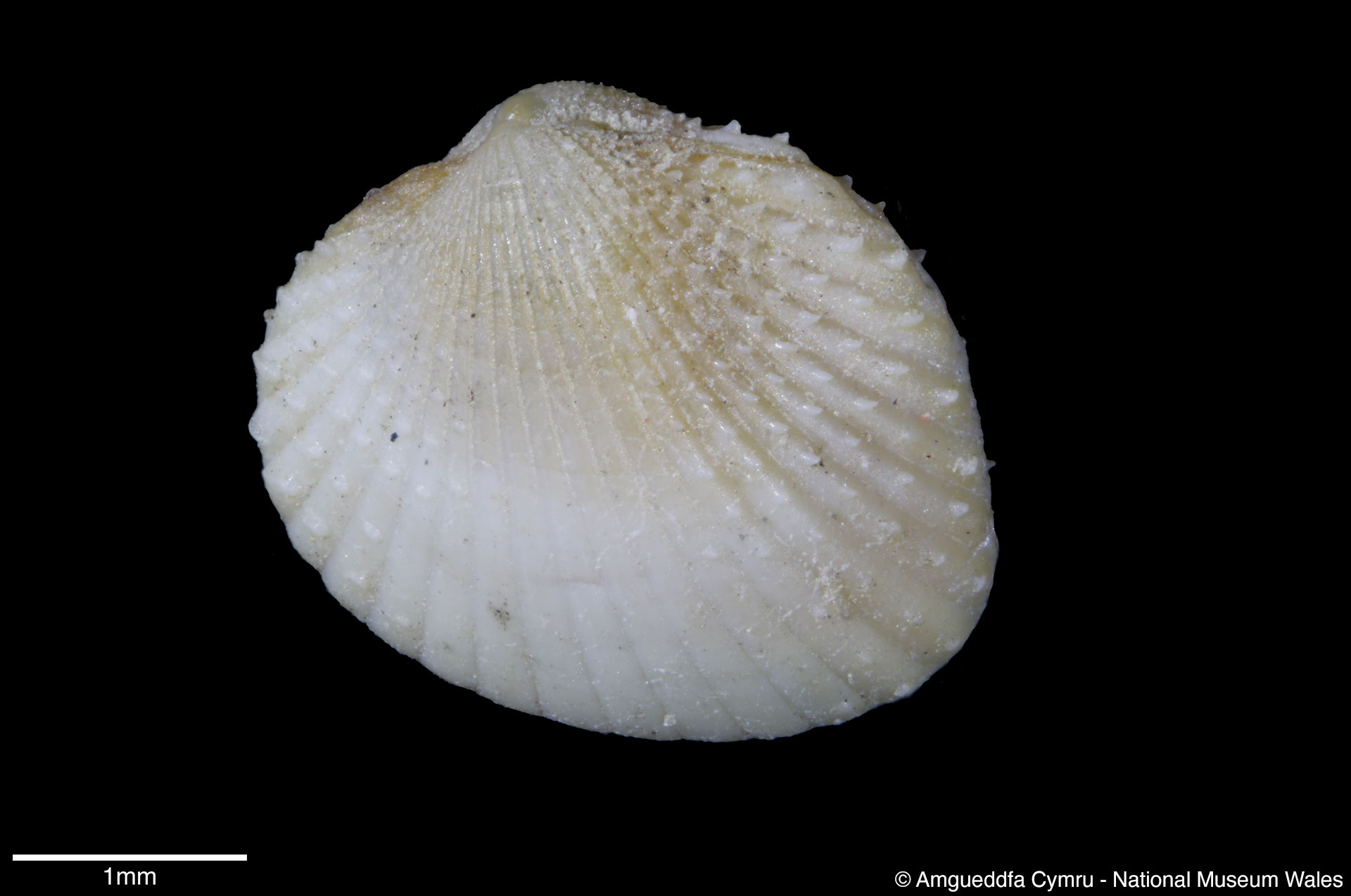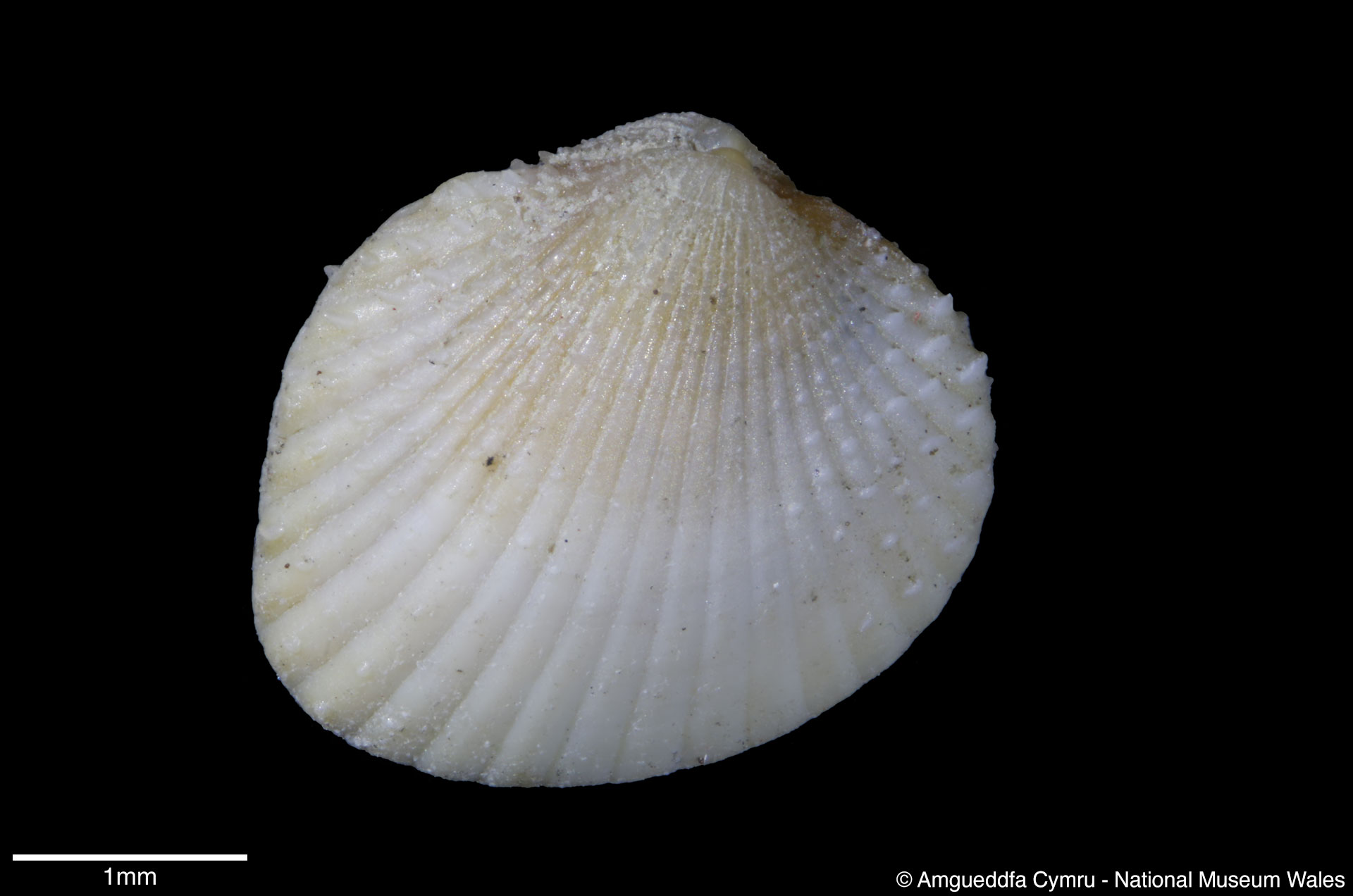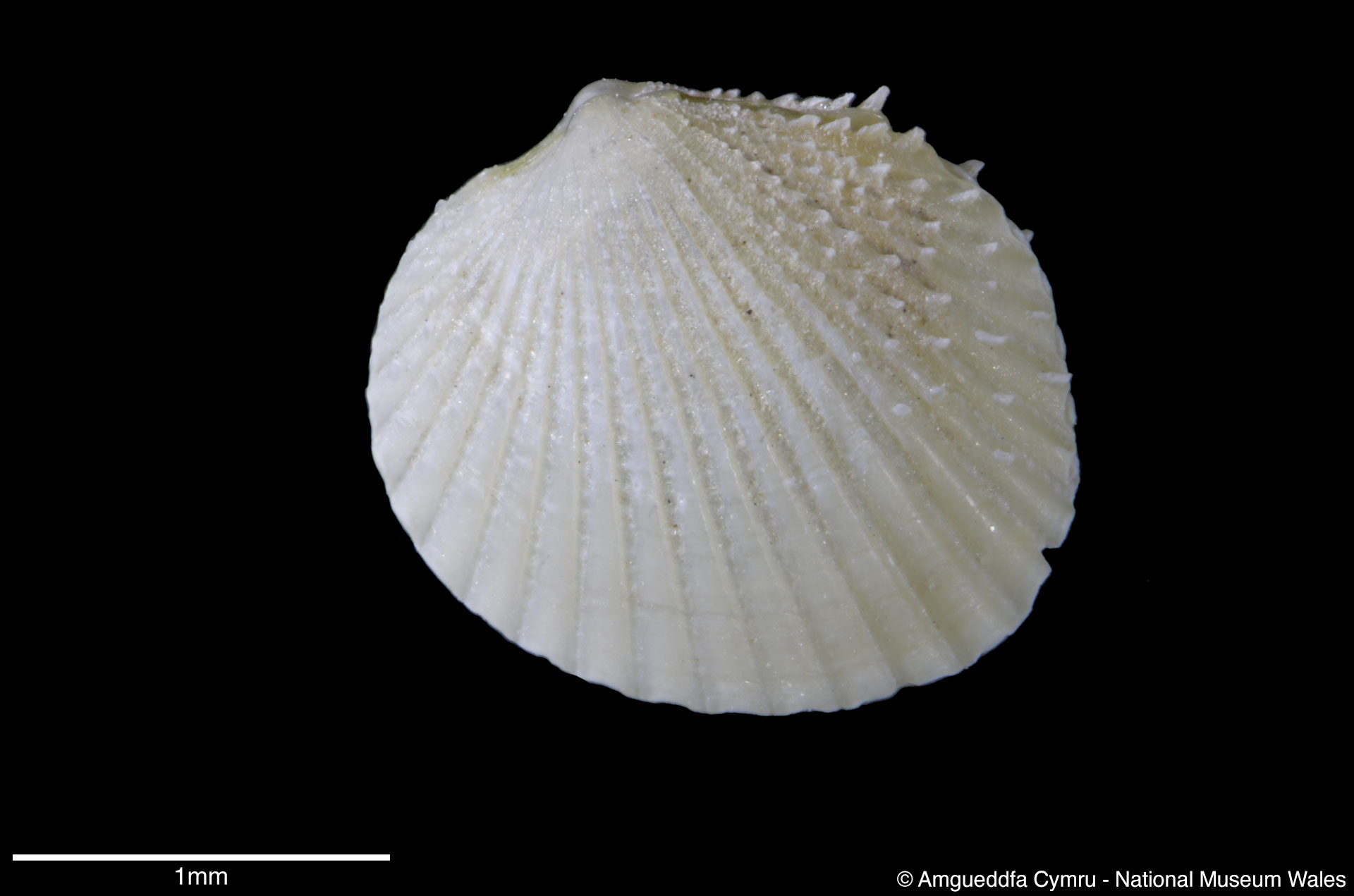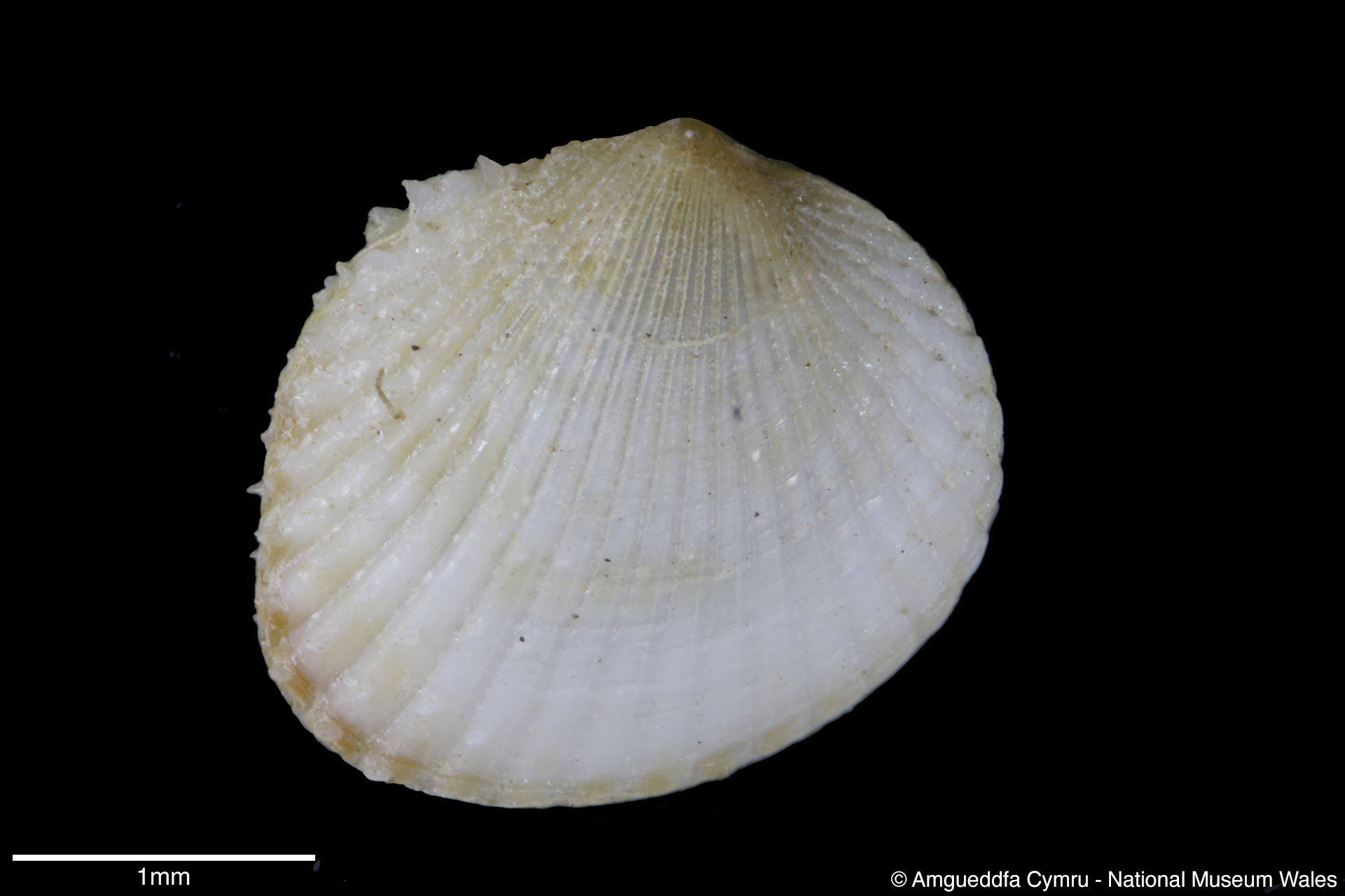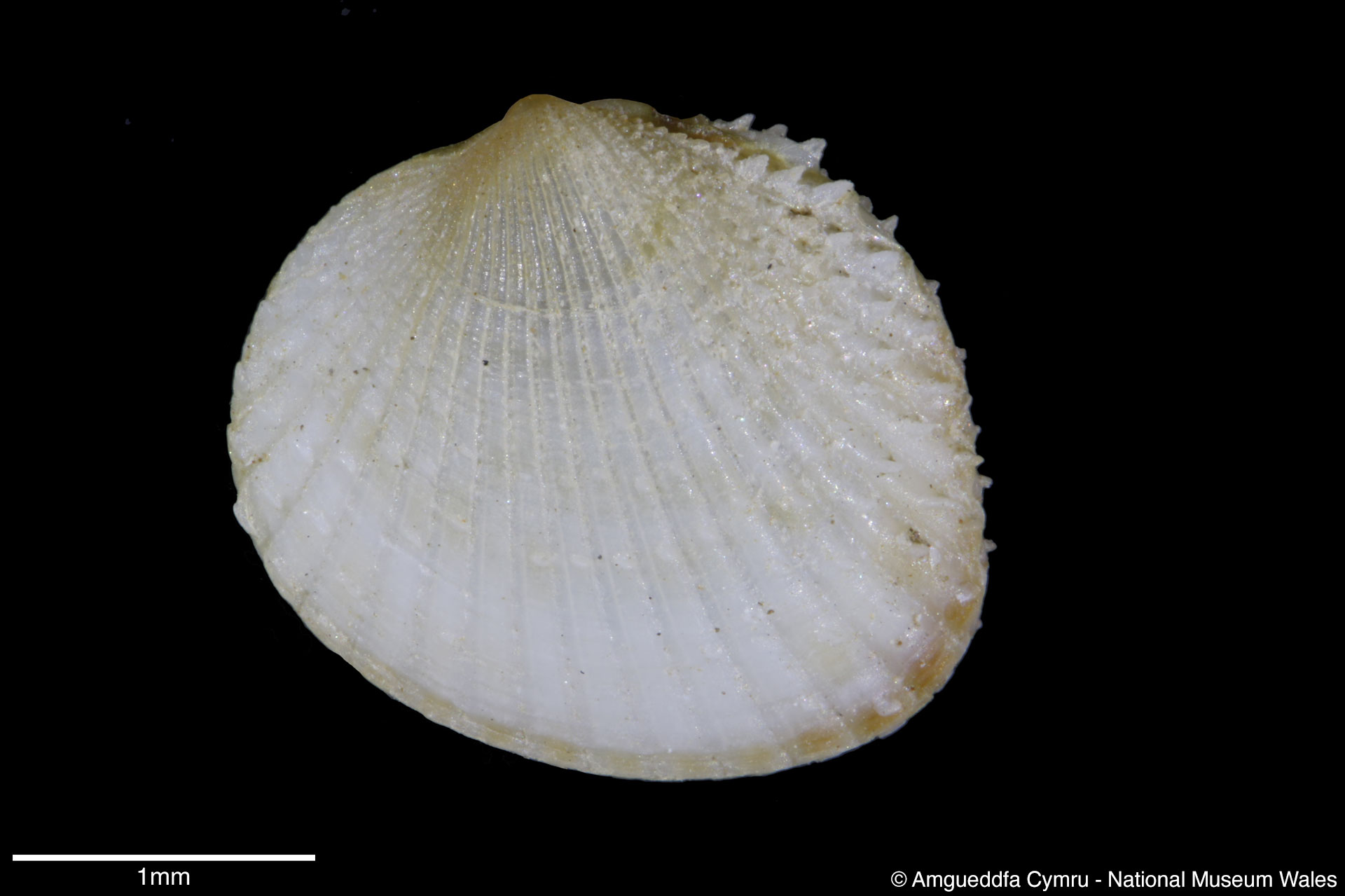Parvicardium pinnulatum (Conrad, 1831)
Cardioidea : Cardiidae |
| Tebble name: | Parvicardium ovale (Sowerby) |
| Smith & Heppell name: | Parvicardium ovale (G B Sowerby II, 1840) |
To size:
To 12mm.
Shell Structure:
Thin but solid shelled.
Equivalve:
Equivalve.
Equilateral:
Inequilateral, beaks a little in front of the midline.
Outline:
Oval–subquadrate a little oblique; dorsal margins very short; posterior margin long, subtruncate; anterior and ventral margins broadly curved. Occasionally oblong resembling
P. scabrum
in outline.
Contour:
Posterior angle distinct, posterior area wide and sloping steeply. Lunule obsolete.
Sculpture:
24-26 radial ribs, profile low especially median that are flat; interspaces very narrow. Anterior ribs with widely spaced heavy cusps that are “stepped” i.e. wedge-like thin at ventral edge wide at dorsal edge; median ribs mostly smooth but some with scattered nodular cusps; posterior ribs with widely spaced spine shaped cusps. Juveniles: Distinctly inequilateral, umbonal keel weak, beak small projecting. Posterior riblets bearing blunt spiny scales, other riblets initially smooth but then bearing wedge shaped cusps on anterior and scattered nodules on median area.
Margin:
Crenulated by interlocking ribs and interspaces. Furrows extending into the umbonal cavity in most but not all.
Ligament:
Prominent but sunken, on short nymph.
Hinge:
Weak, RV with 2 anterior laterals, 1 posterior lateral, 2 cardinals. LV with single anterior and posterior laterals and 2 cardinals.
Pallial Musculature:
Obscure.
Periostracum:
Persistent but thin.
Colour:
Off-white with areas tinged brown.
Distribution & Ecology
Depth Range
Continental Shelf (to 200m)
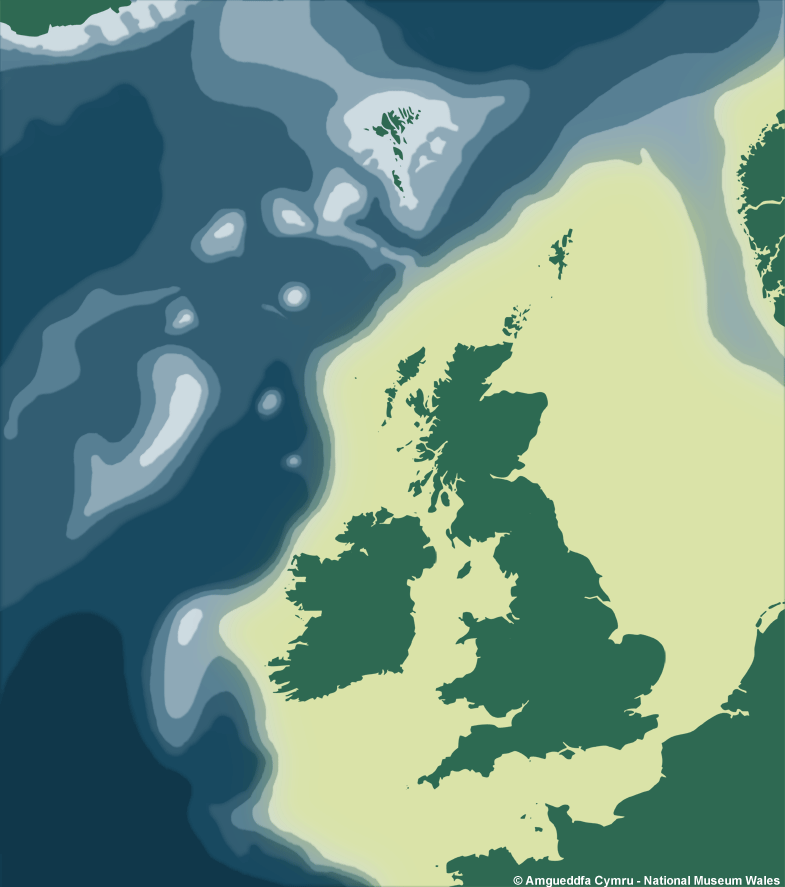
Additional Information & Related Species
Related Species
Cardioidea : Cardiidae
References
Listed are literature citing Parvicardium pinnulatum (Conrad, 1831). Reference containing the species Type Description is highlighted.
|
Conrad T A 1831. Description of fifteen new species of Recent, and three of fossil shells, chiefly from the coast of the United States. Journal of the Academy of Natural Sciences of Philadelphia. 6: 256-268, pl 11. |
|
Van Aartsen JJ & Goud J 2000. European marine mollusca: notes on less well-known species. XV. Notes on Lusitanian species of Parvicardium Monterosato, 1884, and Afrocardium richardi (Audouin, 1826) (Bivalvia: Heterodonta: Cardiidae. Basteria. 64: 171-186. |
Resources
- Conchological Society
of Great Britain & Ireland
Provides resources for understanding, identifying, recording, and conserving molluscs - CLEMAM
Check List of European Marine Mollusca - MarLIN
The Marine Life Information Network for Britain and Ireland (MarLIN) provides information for marine environmental management, protection and education. It is a centre of excellence in spatially based and time-series marine biological information and supports good stewardship in the marine environment. - NBN Gateway
National Biodiversity Network's Gateway. Use it to explore UK biodiversity data, as contributed by participating data providers. - BivAToL
- MarBEF
- Malacological Society
- Unitas Malacologica
- Census of Marine Life
- MarBEF
MarBEF, a network of excellence funded by the European Union and consisting of 94 European marine institutes, is a platform to integrate and disseminate knowledge and expertise on marine biodiversity, with links to researchers, industry, stakeholders and the general public.






























